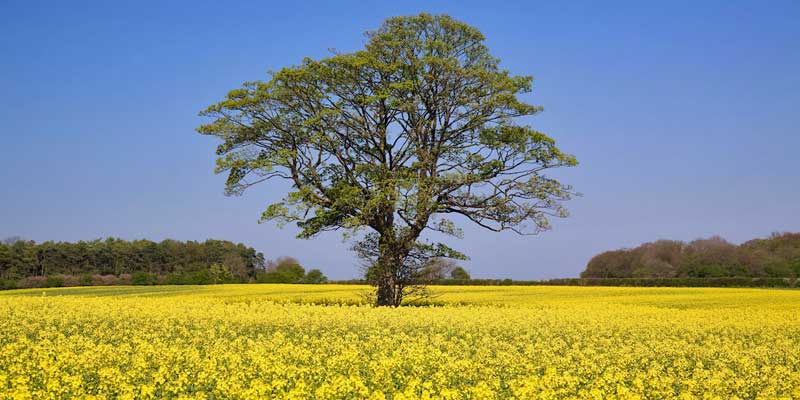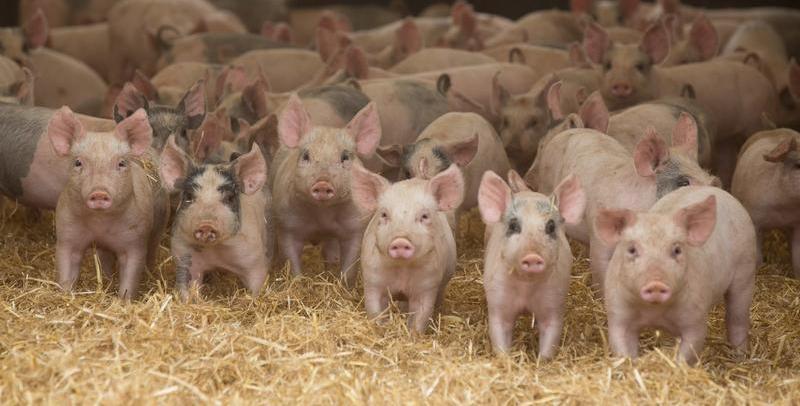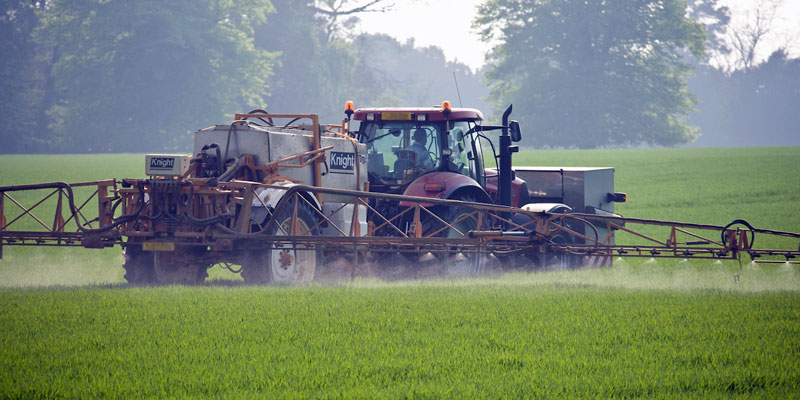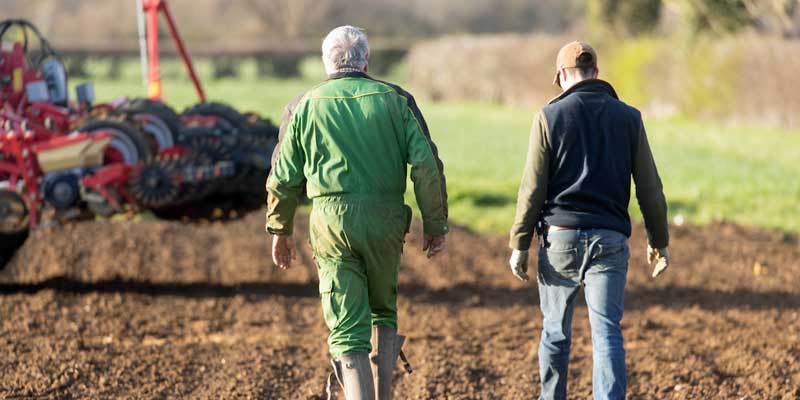ELMs Case Study: Milton Ernest, Bedfordshire
Summary
- Arable, plus pig breeding and finishing - part of larger diversified group
- Farming own land, shared agreements and FBTs
- Currently in ELS and HLS – variety of environmental activities across the farm
- Extensive public access
- Largely self-advised
- Actively preparing for ELMS
- Concerned about reduction in income from 2024 – would like to be rewarded for sustainable production as well
as environmental activities
Background and farm description
The farming enterprise is the agricultural arm of a business based at Milton Ernest in Bedfordshire. It is a family business that traces its origins to a farm purchase in the area in 1939, and the assistant arable manager is the fourth generation of the family to be involved with the business, having joined in 2015.
Meanwhile, the arable manager has been with the business since 1994. The farm covers 2,400 hectares, of these around 2,100 hectares are cropped and the balance is made up of grassland, woodland, tracks, and lakes created from former gravel pits.

The business also has a number of FBTs (Farm Business Tenancies) and shared farming agreements including 1,320 hectares on a farm in Leicestershire, which will go into Mid-Tier shortly.
Overall, the business grew rapidly during the 1970s, and then enjoyed further growth at the beginning of this century when developments included the building of an anaerobic digestion plant, leading to the founding of a separate company.
Anaerobic Digestion
This AD business is still based on the site at Milton Ernest but is no longer part of the wider enterprise. It has two anaerobic digestion plants associated with the wider group, and a number of other AD plants, as well as providing design and building services for AD plants.
The group has diversified into various areas over the years including a dairy herd – which was sold in 2002 – gravel extraction, grain trading, grain storage, car dealership and agricultural machinery dealership.
Pigs
Today the farming business is focussed on arable crops and the pig business. The farm business has two breeding units with 550 sows as well as a finishing unit which has places for 8,000 finishing pigs. It was the presence of these units that led to the development of the anaerobic digestion (AD) unit – and subsequently the founding of the AD business – in the early 2000s.

The AD plant takes the pig slurry as well as food waste. A direct pipeline takes the majority of the pig slurry from the finishing unit to the AD plant, and the business also has a contract to spread the digestate which is produced as a co-product of the power production process.
Around 45% of the nutritional nitrogen required by the farm comes from organic sources, while the balance is provided by liquid fertilisers. The amount and timing of digestate from the AD plant has been limited in recent years by changes in regulations.
Cropping
In terms of cropping, the arable manager says: “We use to rotate wheat, wheat, rape, but with the fall in the value of oilseed rape we have introduced beans into the rotation.
"We are now using a six-year rotation that consists of beans, wheat, wheat, rape, wheat, wheat, but we also have 350 hectares of continuous wheat. One reason for this is to ensure that we have wheat straw next to the pig units.”
Having grown up on the farm the assistant arable manager attended Harper Adams University and worked on a goat dairy before returning to work with the arable manager on the arable side of the farming business.
The arable manager tends to look after the agronomy, while the assistant looks after the day-to-day team management. The assistant arable manager does not currently hold any industry qualifications but hopes to address this in the future.

The farm is also involved in trials work with two major agri-supply companies, which is coordinated by ADAS. The farm business went into RTK (Real Time Kinematic) 10 years ago and this system allows for precise operation in-field including margin size.
Environmental activity
There has been an active environmentally-friendly approach on the farm ever since the assistant arable manager's father took over from his grandfather. He says: “While my grandfather might have removed hedges to make fields easier to manage, my father put them back because of the environmental benefits.”
In terms of environmental schemes which the business currently participates in, on its own land the business is in both ELS and HLS schemes. This includes wildflower plots, winter bird feed, managed hedgerows, margins, grasslands and some woodland.
He says: “These schemes come to an end in spring 2021, and we are currently considering going into Mid-Tier. The rented land at Unilever, which is the other side of Sharnbrook, is already in Mid-Tier.
"On one of our shared farm agreements at Riseley, we have taken 100 out of the 220 hectares on the farm and put it into an AB15 two-year sown legume fallow. This is quite a big decision for that farmer to take half of his cropped are out, and we are not in that territory for our own land.
“For this landowner, he wanted the land to be maintained and to have consistency of income and this made good sense for him. However, we are increasingly becoming land managers rather than productive farmers in many areas.”
As they consider going into Mid-Tier, the business is trying to balance the financial side of the business, the environment and also what will happen with the introduction of ELMS.
Balance
The arable manager says it is important to achieve a balance between practical farming and the environment but emphasises that the business has to make money. He says: “To invest back into both environmental schemes and improving productivity, you have to make money.”
They have a soil management strategy and are exploring the possibility of reducing cultivation while maintaining output. As part of this, they are measuring the output of land drains to look at the loss of nutrition.
Linked to this is the fact that the business purchased a digger in 2017 and has a ditch management plan that ties in with their HLS and ELS schemes. This sits alongside the hedge-cutting programme.
The assistant arable manager is in the process of updating a 15-year-old record of all the ditches and outfalls on the land that they farm.
On the woodland management front, the business has completed surveys of its woodland and is in the process of updating the management plan accordingly. This needs to work alongside the maintenance of field margins.
Access
Across the farm, there is an extensive network of footpaths and ‘permissive accesses’ open to the public. The manager says: “We work closely with the communities around the land we farm to ensure we are delivering the access they need.
"Obviously access to the countryside has been very important over the past nine months and we have worked to ensure that our paths are sprayed off and clearly marked. We have a good relationship with the officer responsible for rights of way.”
The farm business is also an active part of the Ouse Valley Catchment Sensitive Farming Group.
Engagement
The farm participates in LEAF’s Open Farm Sunday every other year. The arable manager says: “The rationale for only doing every other year is that we want to do it well and make a real difference.
"We get around 2,500 people visiting the farm and it takes a lot of work to deliver. We feel that it is a really positive thing, and we are currently exploring whether we should be doing more activities to engage with the public, particularly schoolchildren.
“We would like to get small groups of schoolchildren visiting the farm at specific times of year. If we can educate the children, then we will educate the parents too. We are also considering the benefits of ‘Facetime a Farmer’ with local schools.
"We see a lot of good coming from public engagement, and it’s something we should give more time to.”
The assistant arable manager adds: “In the future, I would like to see our engagement with communities and education increase. I think it would be good for the business in general, but I can also see direct marketing opportunities arising from this.”
Role of the advisors
This business differs from many farms in that the arable manager serves as an in-house agronomist. He achieved his BASIS (Crop protection) qualification in 2002, and also has FACTS (Crop nutrition) and BETA Conservation Management qualifications.
He says: “We use a service from a distributor agronomy company for our soil analysis, but I do all the soil sampling myself and do all the basic agronomy myself. It is important that I have a network including people in a major fertiliser manufacturer and distributor company to aid my decision-making.
“We are also members of TAG (The Arable Group, NIAB), and use a variety of agronomy companies. It’s not just about getting the best price but also looking at efficacy and dissemination of information which helps us to reach our own decisions based on the crop varieties grown and local conditions.
“Because I have all the main industry qualifications – BASIS, FACTS, BETA – it means I speak the same language as our advisers and can discuss the nutritional package and the decisions we make on an equal footing.”

He has worked with one of his advisers for a number of years as he worked for Anglian Water before joining a fertiliser company. The farming business gets all its trace elements from this fertiliser distributor and it provides SAP active crop nutrition analysis of plant leaves, which assesses the nutrient status of a crop.
This crop nutrition adviser has been with the fertiliser company for seven years. He is on the BASIS register and is a BASIS examiner. The work that he carries out for the farm enterprise involves analysis of nutrition in the growing plants and checking for deficiencies that will have a detrimental effect on yield.
He says: “It is not just about limiting the yield. Nutritional deficiencies can also affect the environment. For instance, a shortage of Manganese can reduce the update of Nitrogen. We are also using the data from detailed crop analysis to look at the interaction with the soils and the way this affects the uptake of nutrients.
"Going forward we are likely to see a considerable decrease in crop protection products, and we want to see if nutrition can fill in the gaps that are left by producing stronger, healthier plants that are less susceptible to pathogens and viruses.
“This advice helps the farm business to meet its objective of reducing inputs, and ultimately will help it to meet the objective of ELMS when it comes to more environmentally-friendly and sustainable farming.”
How ELMS might work
The farm enterprise is taking an active approach to considering how ELMS will affect its business and is involved in a LEAF Marque group looking at ELMS, as well as considering going into the LEAF Marque scheme.
The assistant arable manager says: “We are doing many of the things which are requirements for LEAF Marque, but it’s just a matter of collating the information. We like the idea that it helps us to continually improve our approach to the environment.”
Level playing field
The arable manager feels that, regardless of the ELMS scheme, it is important that British farmers have a ‘level playing field’ for their products and are not expected to produce to the highest standards while being undercut by imports produced to less exacting standards.
He says: “We want to produce in a way that is sustainable and has the lowest environmental impact, but we can’t be disadvantaged in the process.”
However, the level of potential administration and ‘red tape’ involved with the scheme is also an issue for the business.
Nervy time
Both the manager and assistant manager see the next few years as a ‘nervy’ time while they consider what to do in the future in terms of extending existing schemes, starting new schemes, and managing the transition to ELMS.
The arable manager says: “Making fundamental decisions about the way we run the business is difficult, particularly when it comes to looking at overheads. There is limited flexibility on staff and machinery and taking 100 hectares of land out of production doesn’t mean you reduce the costs proportionately.
“In recent years we have purchased new machinery and have taken courses to bring us up-to-date with issues around carbon sequestration across the farm. I think that ELMS should be designed to encourage farming businesses that reduce their carbon footprint.
"So it’s not just about turning parts of your land over to environmental schemes, but also about the way you go about farming.”
Rewarding sustainable farming
“For instance, we have gone over to direct drilling some of our crops, reduced primary tillage, and the machinery that we have brought in is smaller, more efficient and has a reduced impact on the environment.
"The same applies to the use of crop protection products, we are trying to minimise our use of them, but there are no rewards for doing so.
“I am also concerned that smaller businesses may benefit disproportionately compared to larger businesses such as ours.”
Making legislation and schemes that support practical, profitable farming while supporting the environment is a continuing theme of their thinking. The business has extensive experience of using organic products but changing regulations have not made it easy for them to use them.
However, they also acknowledge that auditing farms to ensure they are complying with regulations and farming sustainably could be extremely difficult.
Areas for ELMS
Areas which are already being covered or could potentially be added to meet the ELMS criteria include:
- Soil management
- Creating and managing boundary features
- Field edges/buffer strips
- Slurry/manure management
- Managing surface run-off
- Drainage management
- Signage and information
- Access provision and facilities
- Engagement including events

